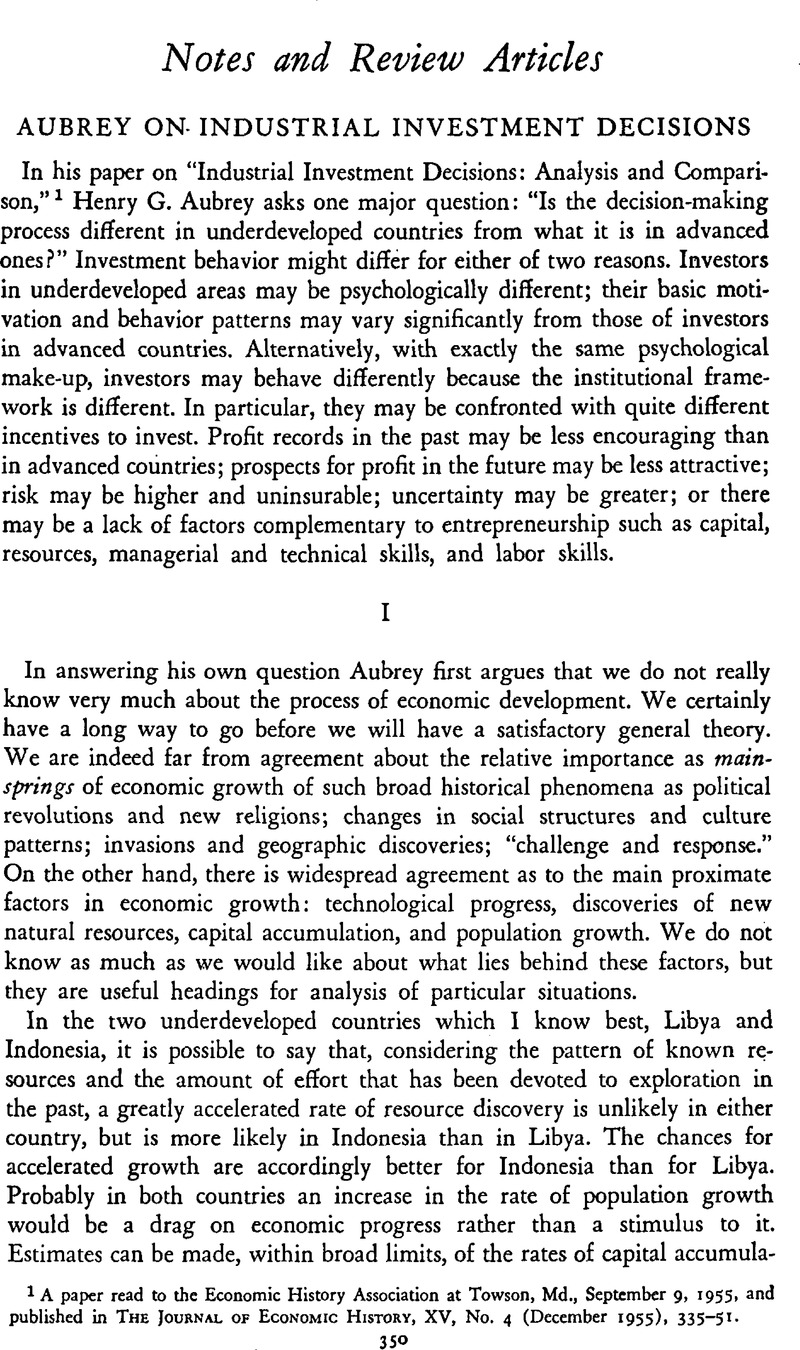No CrossRef data available.
Article contents
Aubrey on Industrial Investment Decisions
Published online by Cambridge University Press: 03 February 2011
Abstract

- Type
- Notes and Review Articles
- Information
- Copyright
- Copyright © The Economic History Association 1956
References
1 A paper read to the Economic History Association at Towson, Md., September 9, 1955, and published in The Journal of Economic History, XV, No. 4 (December 1955), 335–51.Google Scholar
2 Compare Higgins, B., “Development Planning and the Economic Calculus,” Social Research, XXIII, No. 1 (Spring 1956), 35–56.Google Scholar
3 For Indonesia I would answer these questions as follows: (1) Large-scale shifts of population from agriculture to industry are possible without a “stick” if the “carrot” is big enough. The Department of Transmigration in Indonesia has 2,000,000 registrations from people wishing to migrate from Central Java to the Outer Islands. True, in Central Java there is a stick as well, in the form of destruction of the sugar plantations and refineries that provided a livelihood for so many people in Central Java before the war. (2) Definitely. (3) A sharp reduction in population would probably accelerate industrialization. The alternative is much larger-scale investment, probably larger than the country can finance alone at this stage, in those sectors of the economy which have been neglected in the past.
4 Aubrey uses the term risk; but he is referring to contingencies which are essentially uninsurable, and Frank H. Knight's distinction between risk and uncertainty seems to me one worth retaining in the literature.
5 See Richard Eckaus, “The Factor Proportions Problem in Underdeveloped Areas,” and Higgins, Benjamin, “The ‘Dualistic Theory’ of Underdeveloped Areas,” American Economic Review, XLV, No. 4 (September 1955), 539–65.Google Scholar


